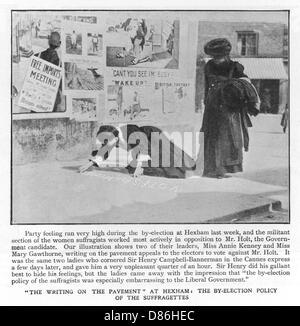#suffragists
Text
On the revolutionary concept of women in practical clothing
“Although there was more than a symbolic connection between the suffocating confinements of women’s long skirts and the suffocating restrictions that defined women’s roles, the dress-reform movement of the 1850s became an excruciating personal torment and a political mortification to the American heroines of women’s rights.
Among the pioneers [of the “rational dress movement”] were Elizabeth Cady Stanton, Lucy Stone, the Grimke sisters and the self-effacing Quaker organizer Susan B. Anthony, who later recalled this time in her life as “a mental crucifixion.”
[...] Elizabeth Smith Miller, the daughter of abolitionist Gerrit Smith, [created “the short dress”] which she had originally stitched up for working in the garden. [It] had a somewhat Turkish look. The lower part consisted of a pair of ankle-length pantaloons with an overskirt that came to the knees. To the knees! No trailing skirts to get caught underfoot, stepped on, ripped or soiled. No undulating petticoats to gather up and hold with dainty grace while turning a corner or sitting down, in order to avoid a mishap. On a visit to Seneca Falls, Lizzie Miller gave Lizzie Stanton a practical demonstration. She showed her cousin how confidently she could walk up a flight of stairs with a baby in her arm and an oil lamp balanced in her other hand, without fear of tripping. Mrs. Stanton, who already had four of her seven children, was instantly converted.
With the bounding enthusiasm for which she was famous, she applied the scissors and needle to her own long skirts and began to evangelize among her many friends in suffrage and abolition, offering to make a present of the short dress to Susan Anthony, a promising new ally from the temperance movement. [...] Stanton wrote to her cousin. “We can have no peace in travelling unless we cut off the great national petticoat … Stand firm.”
There were many exhortations from one feminist to another in the years 1851 and 1852 to stand firm. Wrote Ida Husted Harper, “… the press howled in derision, the pulpit hurled its anathemas and the rabble took up the refrain. On the streets of the larger cities the women were followed by mobs of men and boys, who jeered and yelled and did not hesitate to express their disapproval by throwing sticks and stones.” Many a votes-for-women rally turned into a circus when an unruly mob invaded the hall to gawk at the [short dress]. What began as a personal convenience had turned into a painful political principle, the right of a woman to wear comfortable clothes. In December 1852 while visiting with Mrs. Stanton, Susan B. took the plunge, shortening her skirts and cutting her hair to make a total statement. “Well, at last I am in short skirt and trousers!” she anxiously wrote to Lucy Stone. She was the last of the great suffragists to adopt the style.
Within one year, she would be among the last to still wear it.”
- Susan Brownmiller, Femininity
This is the “short dress” that women, well-known activists and organisers who were at the front of a massive social revolution, had to withstand physical and verbal harassment and public humiliation to wear:

I don’t think men have become any less committed to enforcing decorous object status on women, what with stilettos and 2-inch long fake nails, and clothes that can’t be moved in without constant re-adjustment or restriction.
The best I can say is they’ve lost some of the power they had to force their way. And for that, we thank these women.
346 notes
·
View notes
Text
Yesterday marked the death of Sylvia Pankhurst - one of the finest revolutionary communists to have ever graced Britain's shores. We have rarely seen such fighters on this earth.
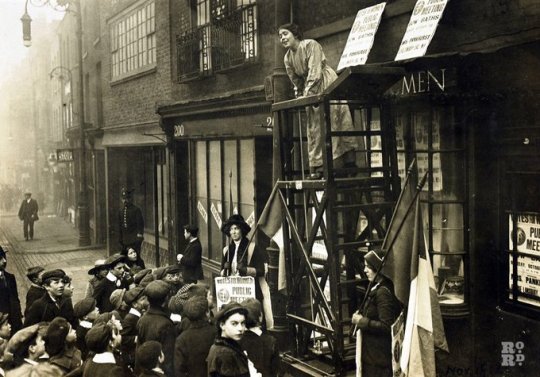
Sylvia was the most tortured suffragette, targetted for her insistence on including working class women within the demands of women's suffrage (much to the disdain of her mother and sister). She did not balk against repeated forced feeding, hunger striking and sleep striking.
She was one of a handful of communists in Britain who opposed the first world war. Her criticism of the war was ceaseless. Practically isolated, she organised relief for working class people in London with cost-price restaurants, free child care for mothers, and more.
She broke with the Labour Party over this, and never returned despite the enormous pressure put upon her by the British labour movement and, later, the Third Internationale. Her arguments with Lenin remain a key debate in communist and British politics.
Pankhurst stood resolutely with the Bolshevik revolution at its outbreak, and was pivotal in organising the "Hands Off Russia" campaign in Britain - which culminated in dock workers across the country refusing to load any munitions to ships.
Pankhurst was an outspoken opponent of racism. Her newspaper - then the Worker's Dreadnought - was the first newspaper in Britain to hire black journalists. When articles written by the Jamaican journalist, Claude McKay, were viewed as seditious, she went to jail for him.

Her support for Irish independence never wavered. She supported Larkin, the Irish Transport and General Workers' Union and United Builders' Labourers Union during the Dublin lock-outs. She stood by the Irish Citizen Army during the Easter Rising.
She was one of the first in Britain to recognise the dangers of fascism, her warnings and agitation beginning as early as 1920. Through this struggle, she became deeply involved in Ethiopian national liberation, where she spent the last years of her life.
All of this is just the tip of the iceberg of the contributions Sylvia made in her life. She did all of this at great cost to herself, enduring her mother and sister denouncing her in the press repeatedly, endless slander, rejection by the mainstream communist movement and worse.

Sylvia also belongs to the great pantheon of disabled revolutionaries, being diagnosed with endometriosis whilst in prison. This, along with the damage done to her organs by forced feeding, left her with often crippling stomach problems.
"I am going to fight capitalism even if it kills me. It is wrong that people like you should be comfortable and well fed while all around you people are starving." She fought until she died, but capitalism didn't kill her. At aged 78, Sylvia passed on.
She was given a state funeral in Ethiopia, and remains the only foreigner buried in the front of Holy Trinity Cathedral. An Ethiopian migrant, cited anonymously in Rachel Holmes' biography of Pankhurst, summed up what she meant to him thus:
"After God, Sylvia Pankhurst".

To learn more about Sylvia, we highly recommend Rachel Holmes' biography, "Sylvia Pankhurst: Natural Born Rebel".
#sylvia pankhurst#communism#politics#marxism#philosophy#communist#anti imperialism#history#leftism#world history#working class#feminism#womens rights#smash the patriarchy#suffragette#suffragists#women's suffrage
95 notes
·
View notes
Text
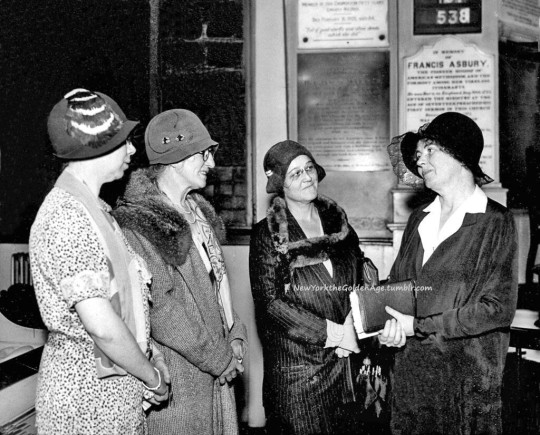
Christabel Pankhurst, right, the British-born suffragist and evangelist, speaks to three businesswomen at the John Street Methodist Church, October 30, 1931. Daughter of the famous suffragist Emmeline Pankhurst and radical socialist barrister Richard Pankhurst, she moved to the U.S. after World War I and became an evangelist for the Second Adventist Movement.
Photo: Associated Press
#vintage New York#1930s#Christabel Pankhurst#business women#suffragists#evangelist#Oct. 30#30 Oct.#1930s dress
19 notes
·
View notes
Text
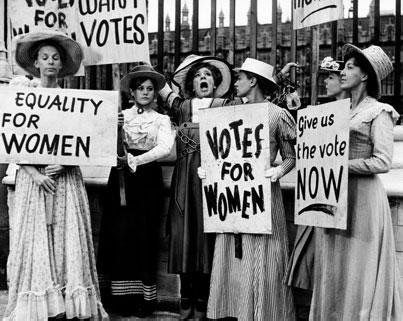
"I don't want equal rights with the white man; if I did, I'd be a thief and a murderer."
— Fannie Lou Hamer
Image: White women protesting for suffrage in America. They won the right to vote in 1920.
#Fannie Lou Hamer#leftistquotes#book quotes#quotes#class war#women's suffrage#suffragette#suffragists#suffrage#quoteoftheday#book quote#life quote#beautiful quote#quote#quotable#fascism#anti capitalist love notes#anti capitalism#oppression#repression#ausgov#politas#auspol#tasgov#taspol#australia#fuck neoliberals#neoliberal capitalism#anthony albanese#albanese government
4 notes
·
View notes
Photo

“Woman suffrage -- hikers arriving in Washington from New York”, February 1913.
49 notes
·
View notes
Text
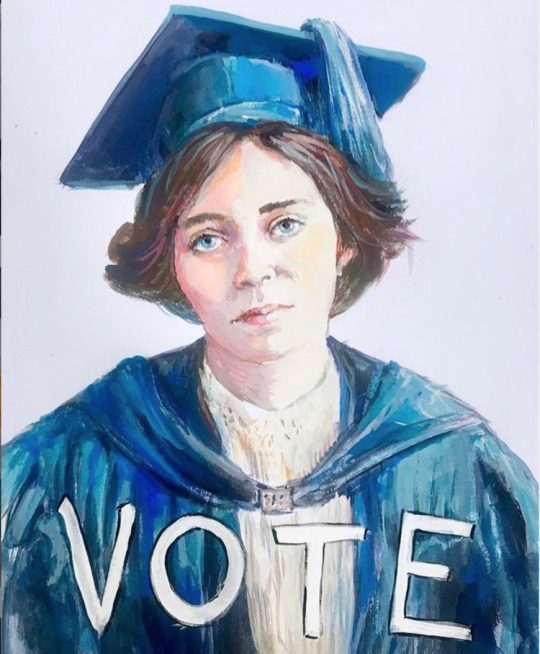
Alice Paul by Allison Adams
"Unless women are prepared to fight politically they must be content to be ignored politically."
Alice Paul (1885 -1977) was a leading civil rights activist and organizer responsible for the final push and success in winning passage of the 19th Amendment (woman suffrage) to the U.S. Constitution. After staging an 18 month long picket line outside the White House, she and many others were beaten and sentenced to prison for seven months (on the charge of “obstructing traffic”). In prison, she went on a hunger strike, but she was force-fed and temporarily institutionalized. Journalistic sympathy for their plight helped turn public and presidential support toward the cause, and in 1919, both the House and Senate passed the 19th Amendment...ending a 73-year battle for the right to vote.
#Alice Paul#Allison adams#herstory#women in history#art#artwork#civil rights#activists#women’s suffrage#suffragists#women’s rights#irl women/girls
3 notes
·
View notes
Text
My boyfriend wants kids.
I do not.
Four months into the relationship
He paints a picture of cherubs bouncing on his knees, a mom-and-dad-and-baby in a big house
I see an operating room, masks and scrubs swirling through a blood tinted fog
Painkillers, but not quite enough to numb
Because no really, she’s just being dramatic
He dreams of a warm bundle of joy swaddled in innocence
I think of stitches that will be placed against my consent, of thread used to ensure
My innocence is maintained
My tightness is maintained
My husband’s pleasure is maintained while he’s inside me
He fantasizes about blood (mine has already been spilt so many times), about passing on a legacy
I think of the wounds my mother inflicted on me, and her mother inflicted on her
(Where does it end?
I know I can be better
But will it be enough?)
Yes there’s daycare yes there’s epidurals yes there’s antidepressants yes there’s pumps yes I’m sure you’ll be a great dad but
I think of all the people who have come before me.
People who gave up everything
People who were expected to give up everything
(I am just a mother I am just a mother I am just a mother I am just a mother I am just a mother please god let me be more than just a mother)
~ i am twenty years old and still just a vessel for him to use
#womanhood#mother#motherhood#womens rights#pregnancy#original poem#poem#poems and poetry#poems and quotes#poems on tumblr#poetry#poets on tumblr#sad poem#horror#heartache#women's suffrage#suffering#suffragists#nothing has changed#childbirth#feminism#femininity#what it means to be a girl
5 notes
·
View notes
Link
On a chilly Thursday in January 1873, hundreds of women convened at the National Hotel in Washington, D.C. It was the fifth convention of the National Woman Suffrage Association and a 44-year-old Susan B. Anthony had taken the floor. She spoke of unity, forming a national women’s newspaper, and the vote. But few people were paying attention to Anthony. Even suffragist leader Elizabeth Cady Stanton was distracted, verging on annoyed.
Because there, just to the side of the podium, an imposing woman stood in pants and a slimming man’s coat, waiting. Her name was Mary Edwards Walker. The first female surgeon in the U.S. Army and a prisoner of war during the Civil War, Walker, who flouted the day’s rigid gender norms, was something of a celebrity. As more and more of the crowd noticed her, they began to murmur and whisper, “she’s here!”
But still Walker stood, patiently waiting for Anthony to yield the floor. When Anthony finally did so, Walker launched into a scathing critique of the NWSA, and Stanton and Anthony with it. They had abandoned the cause of dress reform, she said, giving up the fight for women to renounce health-damaging corsets. Anthony and Stanton lacked courage, she said. At a later suffrage convention, Anthony and Stanton called the cops on Walker. After narrowly avoiding arrest, Walker shouted at the pair, “you are not working for the cause, but for yourselves!”
8 notes
·
View notes
Link
LETTERS FROM AN AMERICAN
August 18, 2022
Heather Cox Richardson
On this day in 1920, the Tennessee legislature ratified the Nineteenth Amendment to the U.S. Constitution by the narrow vote of 50 to 49. A mirror of the Fifteenth Amendment protecting the right of Black men to vote, the new amendment read:
“The right of citizens of the United States to vote shall not be denied or abridged by the United States or by any State on account of sex.
“Congress shall have power to enforce this article by appropriate legislation.”
Like the momentum for the Fifteenth Amendment, the push for rights for women had taken root during the Civil War, as women backed the United States armies with their money, buying bonds and paying taxes; with their loved ones, sending sons and husbands and fathers to the war front; with their labor, working in factories and fields, and taking over from men in the nursing and teaching professions; and even with their lives, spying and fighting for the Union. In the aftermath of the war, as the divided nation was rebuilt, many of them expected they would have a say in how it was reconstructed.
But to their dismay, the Fourteenth Amendment explicitly tied the right to vote to “males,” inserting that word into the Constitution for the first time.
Boston abolitionist Julia Ward Howe, the author of the Battle Hymn of the Republic, was outraged. The laws of the age gave control of her property and her children to her abusive husband, and while far from a rabble-rouser, she wanted the right to adjust those laws so they were fair. In this moment, it seemed the right the Founders had articulated in the Declaration of Independence—the right to consent to the government under which one lived—was to be denied to the very women who had helped preserve the country, while white male Confederates and now Black men both enjoyed that right.
“The Civil War came to an end, leaving the slave not only emancipated, but endowed with the full dignity of citizenship. The women of the North had greatly helped to open the door which admitted him to freedom and its safeguard, the ballot. Was this door to be shut in their face?” Howe wondered.
The next year, Elizabeth Cady Stanton and Susan B. Anthony formed the National Woman Suffrage Association, and six months later, Lucy Stone and Julia Ward Howe founded the American Woman Suffrage Association.
The National Woman Suffrage Association wanted a larger reworking of gender roles in American society, drawing from the Seneca Falls Convention that Stanton had organized in 1848.
That convention’s Declaration of Sentiments, patterned explicitly on the Declaration of Independence, asserted that “all men and women are created equal” and that “the history of mankind is a history of repeated injuries and usurpations on the part of man toward woman, having in direct object the establishment of an absolute tyranny over her,” listing the many ways in which men had “fraudulently deprived [women] of their most sacred rights” and insisting that women receive “immediate admission to all the rights and privileges which belong to them as citizens of these United States.”
While the National Woman Suffrage Association excluded men from its membership, the American Woman Suffrage Association made a point of including men equally, as well as Black woman suffragists, to indicate that they were interested in the universal right to vote, and only in that right, believing the rest of the rights their rivals demanded would come through voting.
The women’s suffrage movement had initial success in the western territories, both because lawmakers there were hoping to attract women for their male-heavy communities and because the same lawmakers were furious at the growing noise about Black voting. Wyoming Territory granted women the vote in 1869, and lawmakers in Utah Territory followed suit in 1870, expecting that women would vote against polygamy there. When women in fact supported polygamy, Utah lawmakers tried unsuccessfully to take their vote away, and the movement for women’s suffrage in the West slowed dramatically.
Suffragists had hopes of being included in the Fifteenth Amendment, but when they were not, they decided to test their right to vote under the Fourteenth Amendment in the 1872 election. According to its statement that anyone born in the U.S. was a citizen, they were certainly citizens and thus should be able to vote. In New York state, Susan B. Anthony voted successfully but was later tried and convicted—in an all-male courtroom in which she did not have the right to testify—for the crime of voting.
In Missouri, a voting registrar named Reese Happersett refused to permit suffragist Virginia Minor to register. Minor sued Happersett, and the case went all the way to the Supreme Court. The justices handed down a unanimous decision in 1875, deciding that women were indeed citizens but that citizenship did not necessarily convey the right to vote.
This decision meant the fat was in the fire for Black Americans in the South, as it paved the way for white supremacists to keep them from the polls in 1876. But it was also a blow to suffragists, who recast their claims to voting by moving away from the idea that they had a human right to consent to their government, and toward the idea that they would be better and more principled voters than the Black men and immigrants who, under the law anyway, had the right to vote.
For the next two decades, the women’s suffrage movement drew its power from the many women’s organizations put together across the country by women of all races and backgrounds who came together to stop excessive drinking, clean up the sewage in city streets, protect children, stop lynching, and promote civil rights.
Black women like educator Mary Church Terrell and journalist Josephine St. Pierre Ruffin, publisher of the Woman’s Era, brought a broad lens to the movement from their work for civil rights, but they could not miss that Black women stood in between the movements for Black rights and women’s rights, a position scholar Kimberlé Crenshaw would identify In the twentieth century as “intersectionality.”
In 1890 the two major suffrage associations merged into the National American Woman Suffrage Association and worked to change voting laws at the state level. Gradually, western states and territories permitted women to vote in certain elections, until by 1920, Colorado, Utah, Wyoming, Idaho, Washington, California, Oregon, Arizona, Kansas, Alaska Territory, Montana, and Nevada, recognized women’s right to vote in at least some elections.
Suffragists recognized that action at the federal level would be more effective than a state-by-state strategy. The day before Democratic president Woodrow Wilson was inaugurated in 1913, they organized a suffrage parade in Washington, D.C., that grabbed media attention. They continued civil disobedience to pressure Wilson into supporting their movement.
Still, it took another war effort, that of World War I, which the U.S. entered in 1917, to light a fire under the lawmakers whose votes would be necessary to get a suffrage amendment through Congress and send it off to the states for ratification. Wilson, finally on board as he faced a difficult midterm election in 1918, backed a constitutional amendment, asking congressmen: “Shall we admit them only to a partnership of suffering and sacrifice and toil and not to a partnership of privilege and right?”
Congress passed the measure in a special session on June 4, 1919, and Tennessee’s ratification on this day in 1920 made it the law of the land. Twenty-six million American women had the right to vote in the 1920 presidential election.
Crucially, as the Black suffragists had known all too well when they found themselves caught between the drives for Black male voting and women’s suffrage, Jim Crow and Juan Crow laws meant that most Black women and women of color would remain unable to vote for another 45 years.
Yesterday the Department of Justice filed a friend of the court brief in the case of League of Women Voters v. Secretary of State of Florida alleging that “in the face of surging turnout in the 2020 election, the Florida Legislature responded by enacting provisions that impose disparate burdens on Black voters” when it imposed new voting restrictions.
A hundred years later, we are still fighting the same fights.
—
Notes:
https://www.neh.gov/humanities/2014/julyaugust/feature/old-friends-elizabeth-cady-stanton-and-susan-b-anthony-made-histo
https://www.documentcloud.org/documents/22139463-fl-ca11-amicus-br-as-filed
Share
LETTERS FROM AN AMERICAN
HEATHER COX RICHARDSON
#Heather Cox Richardson#Letters From An American#civil rights#history#voter rights#suffragists#women's history#women's suffrage movement
6 notes
·
View notes
Link
Renowned Broadway icon Lin-Manuel Miranda and former Secretary of State Hillary Clinton joined forces to host a special fundraiser in support of President Joe Biden's reelection campaign. The event featured a captivating performance of 'Suffs: The Musical,' a production co-produced by Clinton and Malala Yousafzai, highlighting the historic journey of the suffragists and the American women's suffrage movement. The Broadway Fundraiser: A Night of Politics and Performance Lin-Manuel Miranda, celebrated for his groundbreaking work on 'Hamilton,' took center stage at the Music Box Theatre to rally support for President Biden. Alongside him, Hillary Clinton co-hosted the evening, underscoring the importance of civic engagement and the arts in preserving American democracy. Spotlight on 'Suffs: The Musical' The highlight of the evening was the performance of 'Suffs: The Musical,' written by Shaina Taub. This compelling production chronicles the struggles and triumphs of the suffragists, culminating in the passage of the 19th Amendment granting women the right to vote. The show's message resonated deeply with the audience, emphasizing the enduring significance of voter participation and social progress. Lin-Manuel Miranda's Endorsement Miranda, known for his advocacy and creative vision, praised 'Suffs: The Musical' as a testament to the future of musical theater. Addressing the audience, he emphasized the dual impact of enjoying a Broadway show while contributing to the preservation of American democracy through their support of President Biden's campaign. Hillary Clinton's Commitment to Civic Engagement Clinton, a vocal advocate for women's rights and political activism, expressed her gratitude to Miranda and the cast for their dedication to producing such an important work. As a co-producer of 'Suffs,' Clinton highlighted the historical relevance of the musical and its resonance in today's political climate. The Significance of Voter Engagement In her address, Clinton stressed the critical role of voter engagement in driving societal progress. Drawing parallels between the themes of 'Suffs' and contemporary challenges, she urged attendees to channel their enthusiasm for the show into meaningful civic action, echoing the show's message that "progress is possible but not guaranteed."
#Americanwomenssuffrage#Broadway#civicengagement#Democracy#fundraisingevent.#HillaryClinton#JoeBidenfundraiser#LinManuelMiranda#politicalactivism#suffragists#SuffsTheMusical#voterparticipation
0 notes
Text

'Carnation, Lily, Rose' - suffrage banner honouring Mary Moser, 1908
This banner was used in Jun 1908 National Union of Women's Suffrage Societies (NUWSS) Procession
Mary Moser and Angelica Kaufmann were among the founding members of the Royal Academy of Arts (RA). It may come as a surprise that when the Royal Academy was founded in 1768, there were two women among the 34 original Members – fairly progressive by eighteenth-century standards. Angelica Kauffmann (1741–1807) and Mary Moser (1744–1819) were both painters, Moser specialising in portrait and floral paintings and Kauffmann focusing on historical and allegorical subjects. And after Mary's death in 1819, it was over a century before a female Academician was elected.
1 note
·
View note
Text
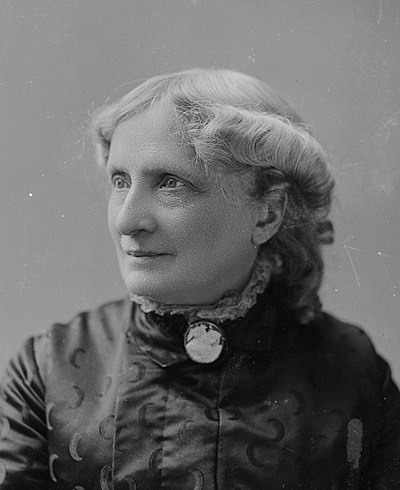
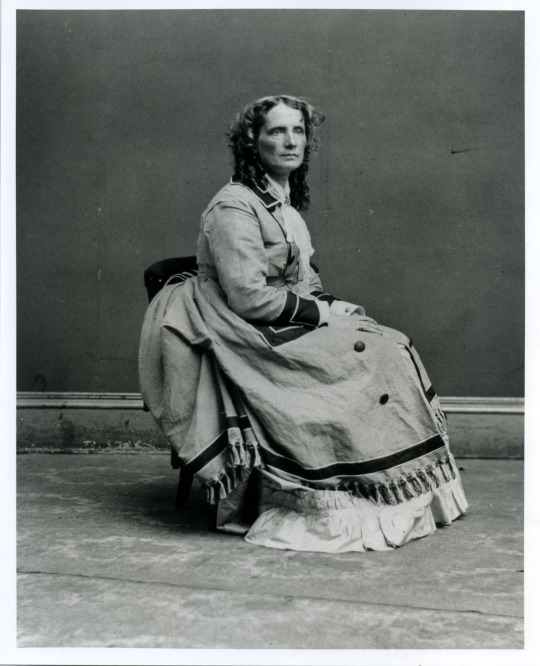
Isabella Holmes Beecher Hooker (February 22, 1822 – January 25, 1907) was a leader, lecturer and social activist in the American suffragist movement. Via Wikipedia
An ardent member of the woman’s suffrage movement, Isabella Holmes Beecher Hooker joined in the cause along with Elizabeth Cady Stanton and Susan B. Anthony.
Pic 2: Isabella Hooker (1873)
Isabella was the first child of Lyman Beecher and his second wife, Harriet Porter Beecher. Isabella began her education at Catharine Beecher’s Hartford Female Seminary and lived with her sister Mary Perkins. In 1841 she married John Hooker, a descendant of Thomas Hooker, the founder of Hartford. John Hooker was a lawyer and an abolitionist.
In the early 1860s Isabella got involved in the woman’s suffrage movement. Isabella joined Elizabeth Cady Stanton and Susan B. Anthony as a member of the National Woman’s Suffrage Association in 1869. She was a founding member of the Connecticut Woman’s Suffrage Association. Isabella’s ideas of equality were influenced by John Stuart Mills’ On Liberty and the Subjection of Women.
In 1871, Isabella organized the annual convention of the National Woman’s Suffrage Association in Washington D.C. and presented her argument before the Committee on the Judiciary of the United States Senate. Her husband, John Hooker, believed in his wife and supported her activities. He helped Isabella draft a bill to the Connecticut Legislature giving married women the same property rights as their husbands. The bill passed in 1877. Isabella annually submitted a bill granting women the right to vote, but it did not pass in her lifetime. Source
0 notes
Photo

Suffragists marching in a Victory Parade in New York, around 34th Street, probably celebrating the passing of the 19th Amendment, 1920.
Photo: Granger via Fine Art America
#New York#NYC#vintage New York#1920s#women's suffrage#suffrage#19th Amendment#suffragists#parade#victory parade
183 notes
·
View notes
Text
Women and Adversity: Narges Mohammadi, 2023 Nobel Peace Prize Winner
Narges Mohammadi, 2023 Nobel Peace Prize winner (Wikimedia Commons)
Subscribe to my blog via email at the bottom of http://www.jamathews.com/blog
Women and Adversity:
Narges Mohammadi
2023 Nobel Peace Prize Winner
The suppression of women in Iran goes beyond what any American woman can imagine. Maybe you were passed up for a job, like I was, because a man applied, but to be jailed because you…

View On WordPress
#BlogsForWriters#FindYourWritingNiche#IranianWomen#NargesMohammadi#NobelPeacePrize#NobelRecipients#PoliticalWriting#Suffragists#Women&039;sAdvocates#WomenActivists#WomenAndAdversity#WomensRights#WomenWriters#@blogsforwomen
0 notes
